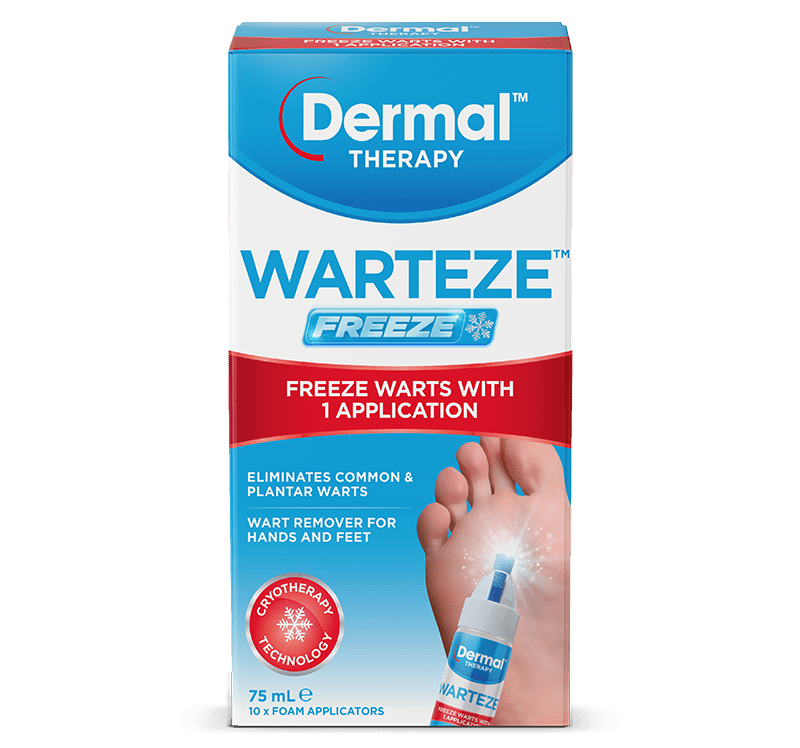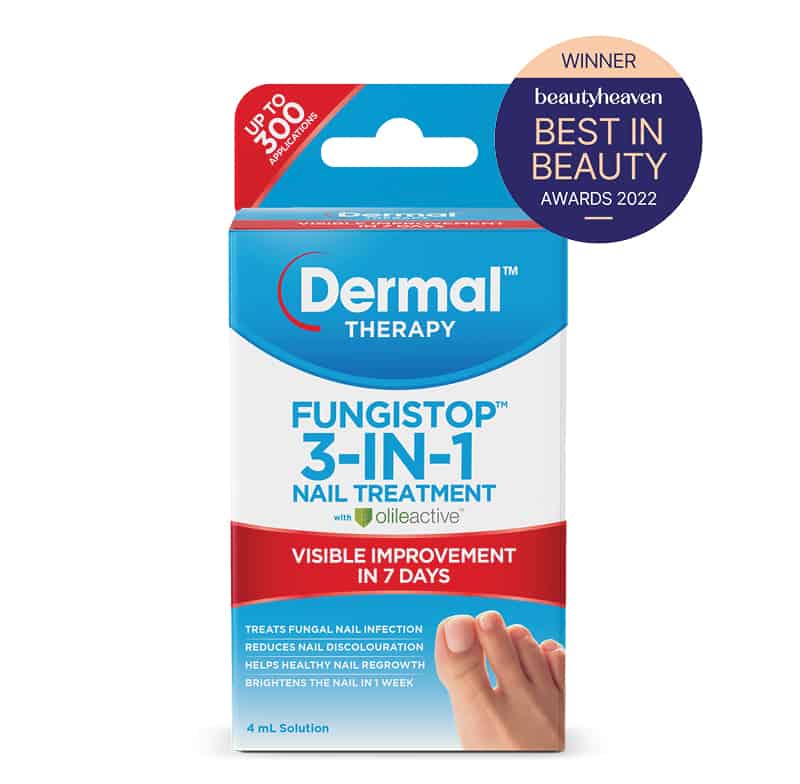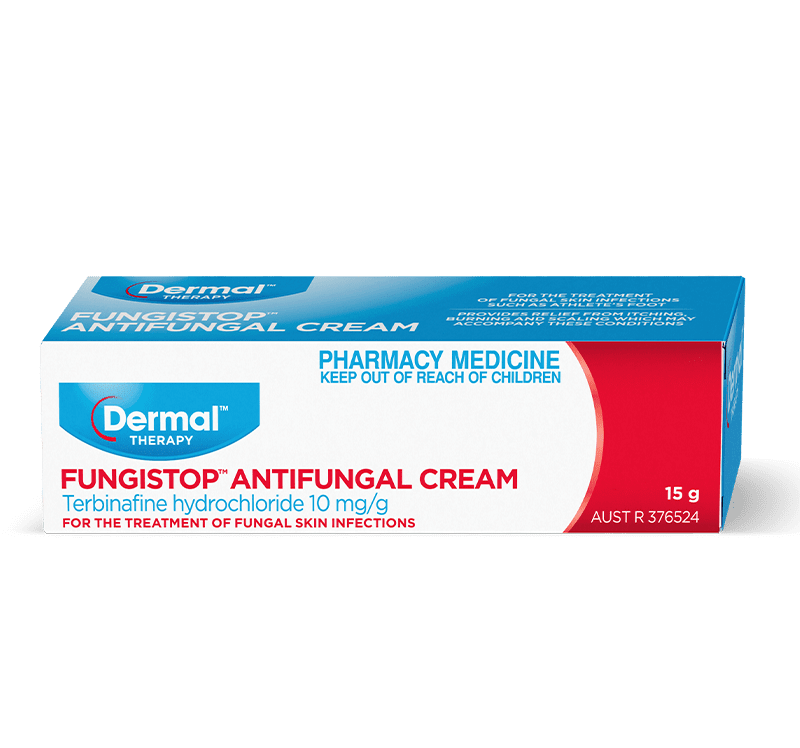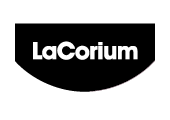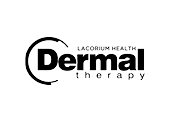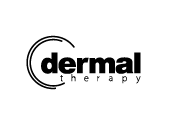The Complete Guide to Nail Fungus Treatment: Causes, Prevention, and Solutions
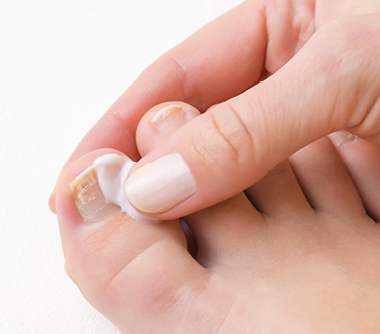
Area
Wart & FungusKey Takeaways:
- Nail fungus is a common condition that causes discolored and brittle nails.
- Strategies like good hygiene and nail care can reduce the risk of infection.
- Common nail fungus treatments include topical solutions and prescription medications.
- Dermal Therapy Fungistop 3-in-1 Nail Treatment is a clinically proven brush-on treatment that can eliminate nail fungus and promote healthy nail regrowth.
Tired of hiding discolored, thickened, or brittle nails? Nail fungus can be an uncomfortable and confidence-draining problem. But the good news is that healthy, clear nails are possible! This comprehensive guide shares insights from our dermatologists into common nail fungus causes and prevention tips, helping you kick that pesky fungus for good!
Understanding Nail Fungus and its Common Causes
Nail fungus, or onychomycosis, is a common condition that affects millions of people every year. It’s caused by certain types of fungi, including dermatophytes, yeasts, and molds. Fungi can enter the nail through tiny cracks or openings in the nail or surrounding skin. Once this happens, it’s often tough to get rid of.
These microscopic organisms love warm, moist environments, such as:
- Sweaty shoes
- Humid climates
- Public showers and swimming pools
This can cause nails to become discolored, thick, brittle, and even painful. While not usually a serious health concern, nail fungus can be unsightly, uncomfortable, and often difficult to treat. Want to know more about why we get fungal nail infections? This article shares some surprising reasons and specialist tips to avoid them.
6 Common Symptoms of Nail Fungus
Nail fungus can affect both fingernails and toenails, but it’s more common in toenails. Some of the most common symptoms include:
- Discoloration: The nail may turn white, yellow, brown, or black.
- Thickening: The nail can become abnormally thick, making it difficult to trim.
- Brittleness: Nails may become brittle, crumbly, or split.
- Distortion: The nail may change shape or become deformed.
- Separation: In more serious cases, the nail may separate from the nail bed.
- Pain and Discomfort: The infection can cause pain, especially when wearing shoes or walking.
It’s important to note that other conditions, like nail psoriasis, paronychia and eczema, can cause similar symptoms, so it’s always best to consult a healthcare professional for a proper diagnosis.
Nail Fungus Causes, Prevention and Risk Factors
Several factors can increase the risk of developing nail fungus. If you fall into one of the following categories, you may need to take extra precautions.
- Age: Older adults are more susceptible due to reduced blood flow, slower nail growth, and increased exposure to fungi over the years.
- Reduced circulation: Conditions that affect blood flow, such as peripheral artery disease, can increase the risk.
- Nail trauma: Injuries to the nail can create entry points for fungi.
- Poor foot hygiene: Not keeping feet clean and dry can increase the risk.
- Excessive sweating: Sweaty feet provide the ideal conditions for fungi to thrive.
- Family history: A family history of nail fungus can increase your susceptibility.
- Weakened immune system: People with weakened immune systems due to conditions like diabetes, HIV/AIDS, or certain medications are more prone to fungal infections.
- Diabetes: High blood sugar levels can affect circulation and weaken the immune system and allowing fungus to grow
Learn more about the surprising Link Between Diabetes and Nail Fungus and What You Need to Know in this in-depth guide from our experts.
8 Strategies to Prevent Nail Fungus You Can Start Today
Preventing nail fungus is often easier than treating it. Here are some top tips to help you keep your nails healthy and fungus-free:
- Practice good hygiene: Wash your feet regularly with soap and water, and dry them thoroughly, especially between the toes.
- Keep nails short and clean: Trim your nails straight across and avoid cutting them too short.
- Wear breathable shoes and socks: Choose footwear made of breathable materials like leather or canvas and always wear dry, moisture-wicking socks.
- Change socks regularly: Be sure to change your socks daily, or more often if they become sweaty.
- Avoid bare feet in public places: Try wearing flip flops in communal areas like showers, locker rooms, and swimming pools.
- Never share nail clippers: Sharing personal items can be a common way to spread fungal infections.
- Disinfect nail tools: If you get pedicures or manicures, ensure the salon sterilizes its tools properly.
- Use antifungal sprays or powders: These products can help keep your feet and shoes dry and prevent fungal growth.
Discover the strategies you need to keep your feet fresh and healthy in our article, How to Prevent Nail Fungus: Top Tips and Best Practices.
What’s the Best Way to Treat Nail Fungus?
If you’re struggling to treat nail fungus, don’t panic. There are plenty of options available, tailored to the seriousness of the infection:
- Over-the-counter antifungal treatments: Topical antifungal creams, lotions, and nail lacquers can be applied directly to the nail. These treatments can be effective for mild infections, but they often have low success rates in penetrating the nail to reach the fungus.
- Prescription antifungal medications: Oral antifungal medications, such as terbinafine and itraconazole, are more effective than topical treatments. They work by killing the fungus from within. However, they can have side effects and may interact with other medications.
- Topical prescription antifungal treatments: Prescription-strength topical medications may be more effective than over-the-counter treatments.
- Laser therapy: This newer treatment uses focused light to kill the fungus without damaging the surrounding tissue. Laser therapy can be effective, but it may be expensive and not always covered by insurance.
- Surgical nail removal: In severe cases, the infected nail may need to be removed surgically. This allows antifungal medication to be applied directly to the nail bed. However, this is usually a last resort.
- Dermal Therapy Fungistop 3-in-1 Nail Treatment: This topical solution is designed to penetrate the nail and treat the fungus at its source. It contains ingredients that provide a powerful defense against fungal infections and stimulate healthy nail regrowth.
Wondering which nail fungus treatment is right for you? Find the answers to your questions in Nail Fungus: Paint or Tablets? Your Guide to Effective Treatment Options.
Should I See a Doctor About My Nail Fungus?
While many cases of nail fungus can be treated at home, it’s important to see a doctor if:
- The infection is severe or painful.
- The infection doesn’t improve with over-the-counter treatment.
- You have diabetes or a weakened immune system.
- You experience signs of a secondary infection, such as redness, swelling, or pus.
A doctor can properly diagnose your condition and recommend the most appropriate nail fungus treatment. In the meantime, get the facts you need in Nail Fungal Infections: Myths vs. Facts.
Enjoy Healthy, Happy Living with Nail Fungus
We get it. Living with nail fungus can be frustrating and embarrassing. However, there are plenty of simple strategies to manage the condition and improve your daily life:
- Follow your treatment plan: It’s important to follow your doctor’s instructions or the directions on your over-the-counter medication carefully.
- Practice good hygiene: Continue to practice good foot hygiene to prevent the spread of infection and promote healing.
- Protect your nails: Wear comfortable shoes and avoid activities that could further damage your nails.
- Manage underlying conditions: If you have diabetes or another condition that increases your risk of nail fungus, work with your doctor to manage it effectively.
- Be patient: Nail fungus can take months to treat, and it may take even longer for the nail to grow back completely. It’s important to continue using your antifungal treatment throughout this time – even if the visible symptoms improve – until the nail has fully grown out and the infection is completely resolved.
Want to know how your treatment is progressing? Learn more in our guide, How Long Does It Take for Nail Fungus to Heal, including a treatment timeline you can start using today.
How to Fight Foot Fungus Today with Dermal Therapy
When you’re struggling with nail fungus, Dermal Therapy is here to help. Our specialist product range is designed to promote healthy feet and nails.
Dermal Therapy Fungistop 3-in-1 Nail Treatment is a clinically proven topical treatment that can help to eliminate nail fungus and promote healthy nail regrowth. Its unique formula penetrates the nail to target the source of the infection, providing effective relief from symptoms such as discoloration, thickening, and brittleness.
Don’t wait to fix your foot fungus. Choose Dermal Therapy Fungistop 3-in-1 Nail Treatment for its unique formulation, including Urea, Aloe, Tea Tree and Eucalyptus Oils.
Take Back Control of Your Nail Health with Dermal Therapy Anti-Fungal Liquid
Say goodbye to the irritation, discomfort, and embarrassment of nail fungus, and hello to healthy, clear nails. Sure, nail fungus is a common condition. But it doesn’t have to be a life-long burden, especially when you understand its causes, practice good prevention techniques, and find the right nail fungus treatment.
To fight nail fungus at its source and promote healthy regrowth, choose Dermal Therapy Fungistop 3-in-1 Nail Treatment.
Fungal Nail Infection FAQs
References:
Aafp.org – Onychomycosis: Rapid Evidence Review
Healthdirect.gov.au – Toenail infection
Webmd.com – Nail Psoriasis
Webmd.com – Paronychia Treatment


